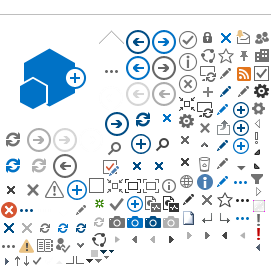Rob Anderson (M&CM), John Bolton (UCT) and Vernon Coyne (UCT
) The first question is usually "Was it a success?" A glib reply would be "In summer in Cape Town - what do you think?" Over 300 delegates from 51 one countries came to Cape Town to attend the 17th ISS, the first to be held in Africa. The meeting was co-hosted by UCT and M&CM, under the auspices of the International Seaweed Association, and held in the Leslie Building on UCT’s upper campus.
The ISS series is perhaps unusual in that it attracts a broad range of delegates: academics, commercial companies, resource managers, and consultants in seaweed and allied businesses. The ISS is undoubtedly the main international forum for interaction both among and between these various groups, and it is no secret that a lot of business is done within the seaweed industry at these symposia. For scientists its the triennial opportunity to find out what the industry is up to, while the industry scans the scientific contributions to see if there are any new developments worth capitalising on. The Leslie foyer was transformed into a seaweed exhibition centre for the week.
The range of presentations was broad. Mini-symposia covered biological interactions in seaweed mariculture, integrated aquaculture and bioremediation, recent advances in the farming and harvesting of coalescent seaweeds, algal biotechnology, biogeography of the seaweeds of southern Africa, and low-volume/high-value seaweed products. The four plenary presentations dealt with the human factor in Eucheuma cultivation (a massive industry in the Far East and in East Africa), seaweed pathology, seaweed resources in southern Africa, and, as is customary, a summary of worldwide trends in the industry. There were 94 contributed papers (divided into three parallel sessions) and about the same number of posters, on a huge range of topics from kelp harvesting to education in phycology.
Several potential new products attracted great interest. Alginate (the colloidal chemical extracted from kelp) is being used by a group of Austrian technologists to produce a non-polluting packaging foam that is now at an industrial pre-production stage. This can be used instead of styrofoam, but is completely biodegradable. It invokes pleasant images of unpacking a new computer or hi-fi, and then chopping the half cubic metre of packaging into the compost heap. Ultra-pure alginate is being intensively researched for encapsulated drug delivery and for cell encapsulation, and new advances are very close to entering the market. For instance, diabetes may in the future be treated by sub-cutaneous implants of living pancreas cells, which would continuously deliver insulin, obviating the need for daily injections.
Among the presentations on seaweed cultivation, the intensive tank and pond methods used by Neori, Friedlander and their Israeli colleagues, aroused particular interest. These methods could be adapted for use on SA abalone farms, both to grow supplementary food for the abalone, and as part of the water-purification system when farms have to re-circulate water to avoid pumping in harmful microalgae (red tides).
The presentations concerning disease resistance and algal biotechnology generated a lot of interest amongst delegates. In particular, the plenary lecture on Phycopathology, delivered by Bernard Kloareg (France), highlighted the importance of understanding the nature of algal defense systems in order to alleviate losses in maricultured seaweeds due to disease. A Genetic Engineering workshop resulted in a healthy, and extremely lively, debate concerning the issue of genetically modified seaweeds. The workshop provided an important platform for dialogue between research scientists and industry representatives. It was generally agreed that discussion concerning genetically modified seaweeds was timely and that similar workshops should become a regular feature of future symposia.
Support from M&CM enabled us to boost the number of African delegates and students who could attend, so that in the end we had delegates from Ghana, Nigeria, Kenya, Tanzania, Mozambique and Namibia. The National Research Foundation provided funding for a corrective action programme for South African students. One of these participants has now started an MSc in applied phycology (see his report on the symposium in the student section of this newsletter).

